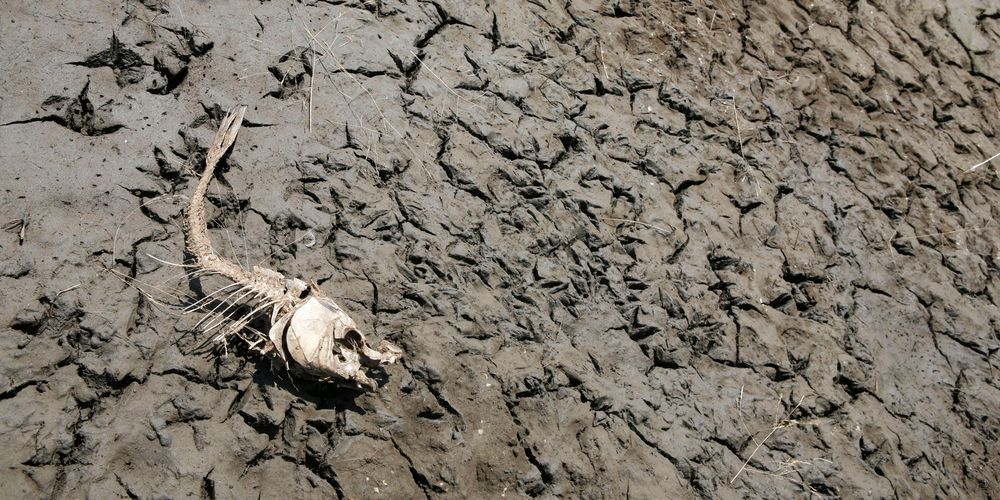The discovery could mean that other inhospitable habitats may potentially harbor life.
This could mean there are more oceans in the universe than previously thought, making the existence of extraterrestrial life more plausible.


The Amazon Rainforest is well known across the world for being the largest and most dense area of woodland in the world. Spanning across nine countries, the Amazon is home to millions of different animal and plant species, as well as harboring some for the world’s last remaining indigenous groups. The Waorani people of Pastaza are an indigenous tribe from the Ecuadorian Amazon and have lived in the Rainforest for many generations. However, there Home came under threat from a large oil company — they didn’t take it lightly.

After a long legal battle with a number of organizations, the Waorani people successfully protected half a million acres of their ancestral territory in the Amazon rainforest from being mined for oil drilling by huge oil corporations. The auctioning off of Waorani lands to the oil companies was suspended indefinitely by a three-judge panel of the Pastaza Provincial Court. The panel simply trashed the consultation process the Ecuadorian government had undertaken with the tribe in 2012, which rendered the attempt at land purchase null and void.

The Expedition 59 crew is exploring space’s long-term impacts on biology and physics today helping astronauts go to the Moon in 2024. #Moon2024
The six residents aboard the International Space Station kicked off the workweek today exploring microgravity’s long-term impacts on biology and physics. The Expedition 59 crew is also ramping up for a fourth spacewalk at the orbital lab this year.
NASA is planning to send men and women to the Moon in 2024 and life science on the station will help flight surgeons keep lunar astronauts healthy. The space physics research will also provide critical insights to engineers designing future spacecraft and habitats for exploration missions.
Several dozen mice and their immune systems, which are similar to humans, are being continuously observed in specialized habitats. Flight Engineer Anne McClain tended to the mice today cleaning cages and restocking food in Japan’s Kibo laboratory module. Doctors are testing the hypothesis the immune response decreases in space and exploring advanced vaccines and therapies benefiting both astronauts and Earthlings.

Those who watched the full 51-minute version of Jeff Bezos’ May 9 Blue Moon announcement were treated to a tutorial on the work of Dr. Gerard K. O’Neill. In the 1970s Dr. O’Neill popularized the idea of space colonies that rotate in orbit allowing tens of thousands of inhabitants to live comfortable lives in Earth-like habitats. Bezos even commissioned updated renderings to excite the audience’s imagination.
Bezos articulated, as he has on many occasions that human civilization should and must expand out into the space to live and work in permanent space settlements. Doing so will allow the best planet in the Solar System, the Earth, to become a protected treasure in the vast harshness of space.
He understands that by creating the infrastructure to accelerate economic development in space his vision of space settlement will more rapidly come to fruition. But Bezos is sober about his space colony ambitions. He calls it a multigenerational endeavor. And so it may be.

A self-assembling space habitat, a deep sleep chamber to shuttle astronauts on long journeys, and a protective magnetic force field are the latest projects NASA is embarking on.
NASA’s Innovative Advanced Concept (NIAC) Program is responsible for funding futuristic space concepts that could, as NASA puts it, “change the possible.” It’s not enough to merely be a cool concept, though—projects are also screened for technical plausibility. In its latest round of funding, NIAC’s Phase II program has selected eight projects to move ahead. Among the most promising ones are three focusing on how to build livable future habitats in space.
As Northrop Grumman’s NG-11 Cygnus spacecraft flew high above in low Earth orbit, NASA astronauts at the Johnson Space Center recently completed testing and evaluation of the company’s Earth-based full-scale cislunar habitat mockup.
Designed to test the ergonomics, feature layout and functional compatibility with basic “day-in-the-life” astronaut tasks for potential long-term use as a part of the future Lunar Gateway in cislunar space, the habitat mockup necessarily incorporated all core elements that would eventually be needed by a four-person Orion crew: sleep stations, a galley, crew exercise equipment and of course accommodations for science, a robotics workstations and life support systems.

A rise in the number of game developers, adoption of brain computer technology to enhance the complete gaming experience is triggering the growth of BCI market. The BCI application in 2017 has also influenced the smart home control sector and is believed to grow rapidly during the forecast period of 2018 to 2025. The high living standards across U.S and Canada are held responsible for the demand of BCI in smart home control system industry.
Brain-computer interface (BCI) is a technology that agree to communicate between a human-brain with an external technology. The term can be referred to an interface that takes signals from the brain to an external piece of hardware that sends signals to the brain. There are different brain-computer interface technologies developed, through different methods and for diversified purposes, including in virtual reality technology.


Get ready for a future in which most things you need to live, food, housing, transportation, and information, are free or nearly free.
The influential economic theorist looks ahead to a world of virtually free energy and zero marginal cost production, and to a desperate race against climate change.
